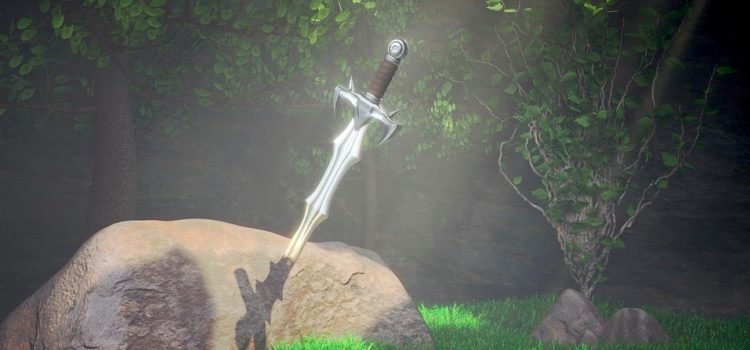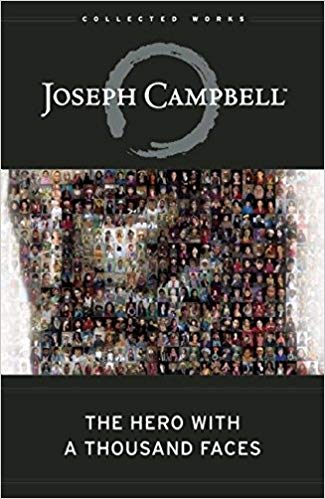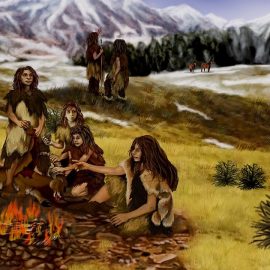

This article is an excerpt from the Shortform summary of "The Hero with a Thousand Faces" by Joseph Campbell. Shortform has the world's best summaries of books you should be reading.
Like this article? Sign up for a free trial here .
Does Arthurian legend follow the conventions of Joseph Campbell’s hero’s journey? In what ways is King Arthur the archetypical hero of classic legends?
We’ll cover the elements of the hero’s journey and how Arthurian legends map onto these elements.
The Hero’s Journey and Arthurian Legend
The archetypal myth is that of the hero’s journey, which details the exploits of an exalted figure such as a legendary warrior or king, as in Arthurian legend. But the hero can also start out as an obscure figure of humble origins, on the fringes of society. Frequently, this hero is born to lowly circumstances in a remote corner of the world and is the product of immaculate conception and virgin birth. Thus, they start out with some essential element of the gods already inside them.
The hero sets out on a journey to acquire some object or attain some sort of divine wisdom. This can be something material (like Arthur’s quest for the Holy Grail in Arthurian legend) or something with far greater spiritual weight (like the Buddha’s journey to find ultimate enlightenment). The hero undergoes great trials and tribulations during the course of their quest, undergoes a spiritual (and sometimes literal) death and rebirth, and transforms into an entirely new being. They gain new powers, and with those powers, achieve their goal—they receive the ultimate boon. They then return home to share this heavenly reward with their people—and in doing so, redeem all mankind.
The Monomyth
The core structure of mythology is called the monomyth. It involves three rites of passage—separation, initiation, and return. From the myths of the ancient Egyptians and the medieval Arthurian legend to the folk-tales of the native Maoris of New Zealand, the pattern of the hero’s journey usually follows this cycle: a separation from the world he or she has always known (embarking on the quest), gaining some spiritual or other-worldly power, and a return in which they share the boon of the new power with humanity.
The Composite Hero
The heroes of mythology, whether it’s King Arthur of Arthurian legend, Odysseus, the Buddha, the Chinese emperor Huang Ti, or Moses, share similar characteristics.
They are often figures who have unique talents or gifts and hold an exalted position within their society—they are renowned scholars, warriors, or kings. But the opposite can also be true: the archetypal, or composite hero can also start out as an obscure figure of humble origins, on the fringes of society. But whether they start out as prince or pauper, they set out on their journey to address some sort of need, to fill some kind of spiritual void. In simple romance tales or fairy tales, this can be nothing more than obtaining a golden ring or the hand of the fair princess, while in myths with deeper theological undertones (like the story of Christ), the hero sets out to redeem and renew the spiritual life of the entire world and save it from falling into ruin, as does Arthur in Arthurian legend.
The Call to Adventure
In the first part of the monomyth, we meet our hero, our “man of destiny,” and witness their call to adventure. In Arthurian legend, this call comes in the form of a deer, as we’ll see. The call to adventure can come about through chance, even a mistake or blunder, which introduces the hero to a hidden world of possibility, guided by mysterious forces which the hero will come to understand through the course of their journey.
A frequent device employed in mythology is that of the herald or conjurer, the (often unlikely) figure who reveals the hero’s destiny and spurs them to action. The herald represents our subconscious, wherein all of our darkest fears are hidden. They are forcing us to confront things that we do not want to. As such, the herald is frequently a grotesque or unpleasant-looking figure, like a frog or a beast, or otherwise some veiled, mysterious, or unknown figure, such as the hart in Arthurian legend.
King Arthur and the Hart
In Arthurian legend, King Arthur encounters a great hart (an archaic Old English term for a deer) in the forest. He gives chase to the animal, vigorously riding his horse until it dies from exhaustion. Arthur then comes to a fountain, where he sets down his dead horse and becomes lost in deep thought.
While he’s sitting at the forest fountain, he hears what sounds like dozens of hounds coming toward him. But, it is not hounds—instead, it is some strange beast, the likes of which the King had never seen before. The noise of 30 hounds barking and snarling emanate from its stomach, although there is no noise while the beast drinks at the fountain. Arthur marvels at this sight: this is his herald, his signal to begin his quest. From this beginning, Arthurian legend continues to exemplify the features of Campbell’s hero’s journey.
———End of Preview———

Like what you just read? Read the rest of the world's best summary of "The Hero with a Thousand Faces" at Shortform . Learn the book's critical concepts in 20 minutes or less .
Here's what you'll find in our full The Hero with a Thousand Faces summary :
- How the Hero's Journey reappears hundreds of times in different cultures and ages
- How we attach our psychology to heroes, and how they help embolden us in our lives
- Why stories and mythology are so important, even in today's world






